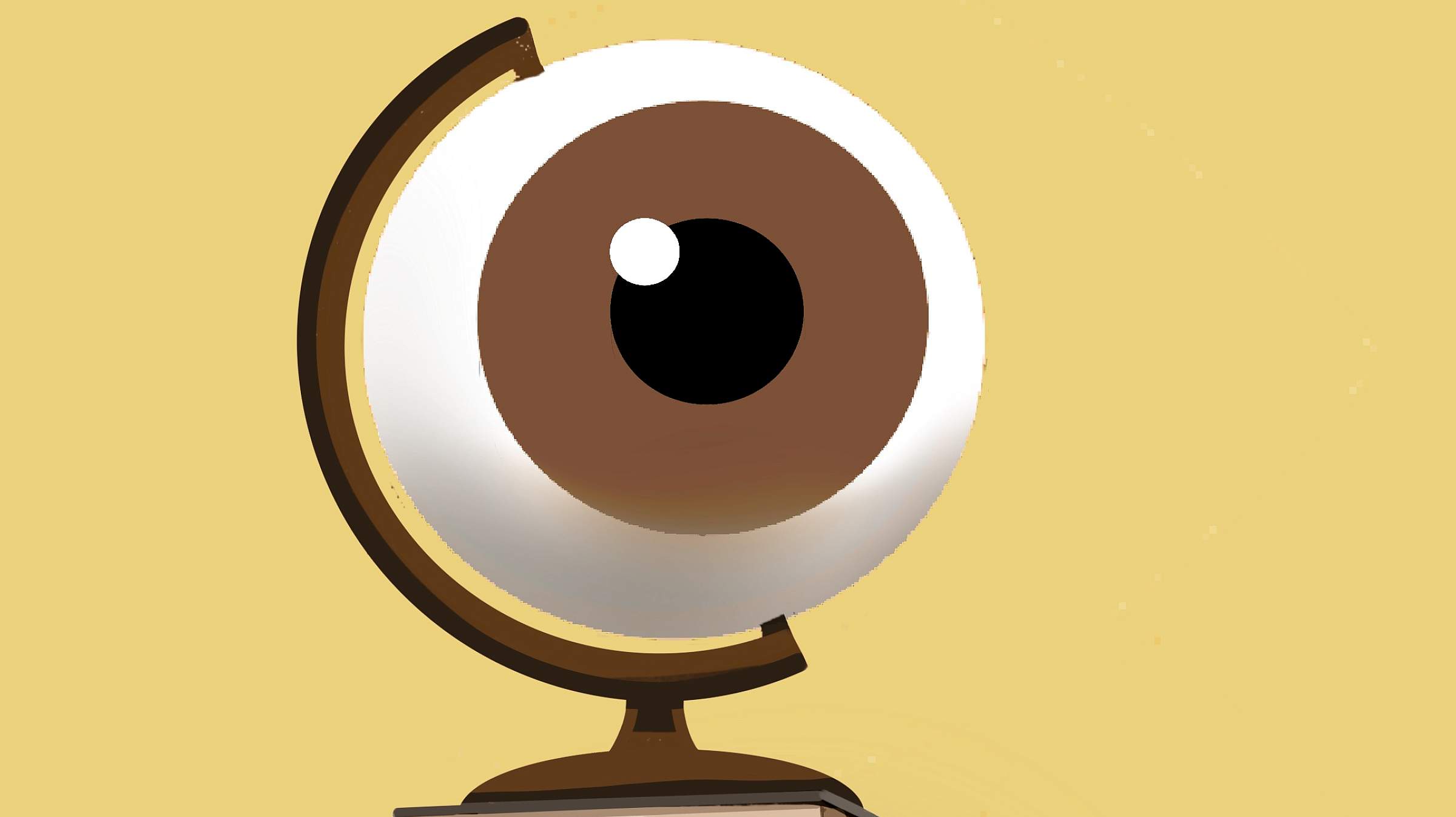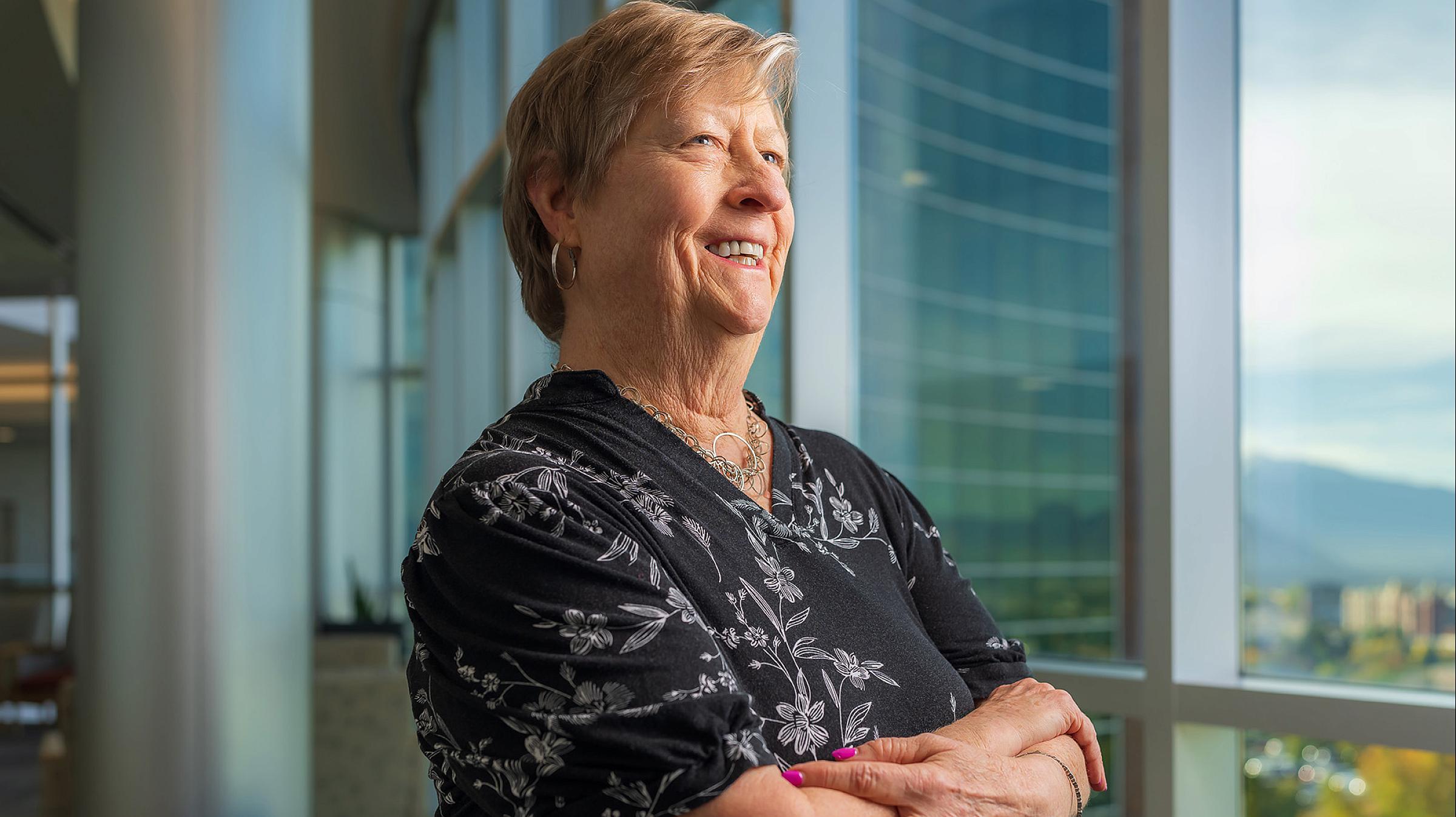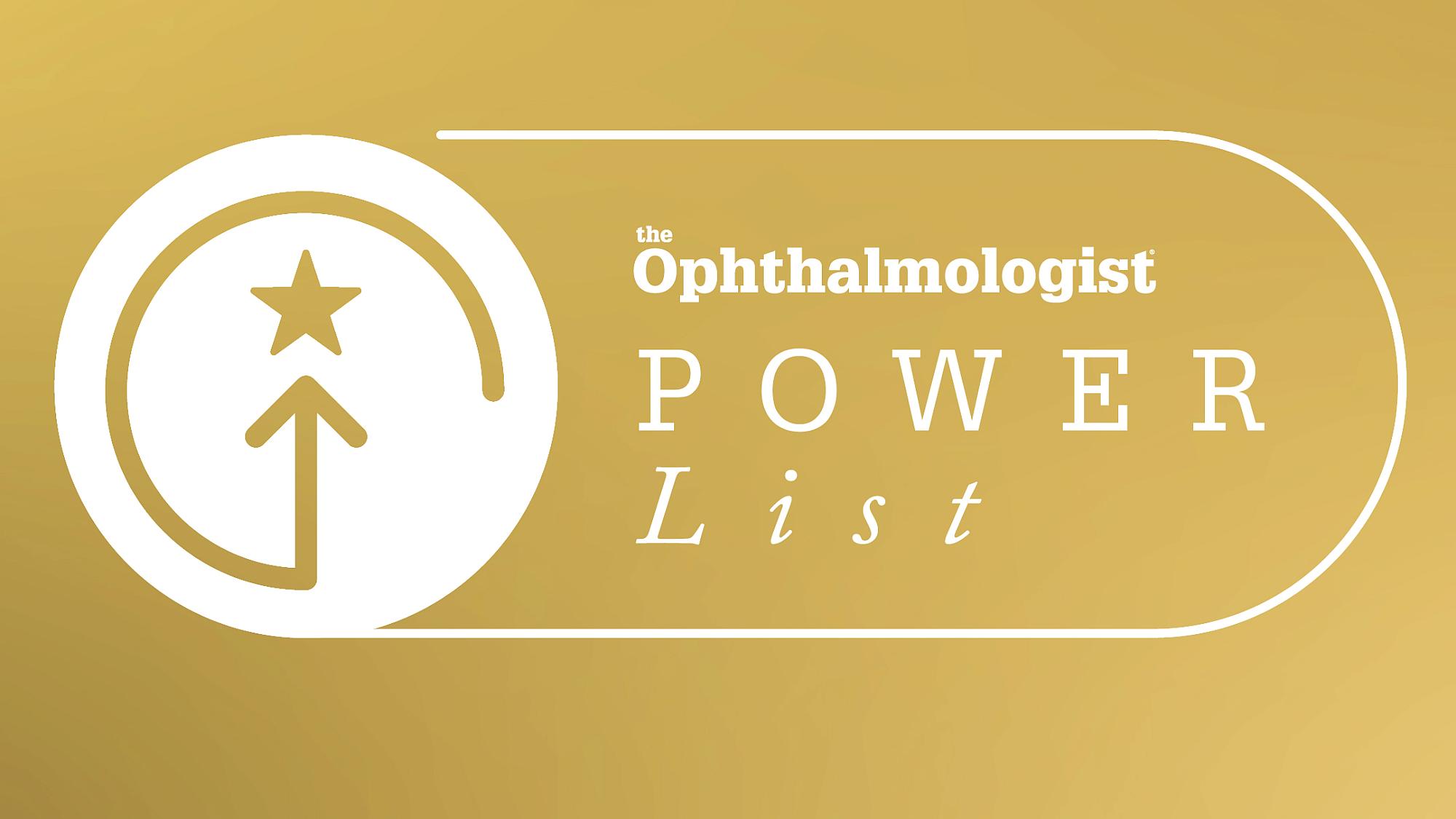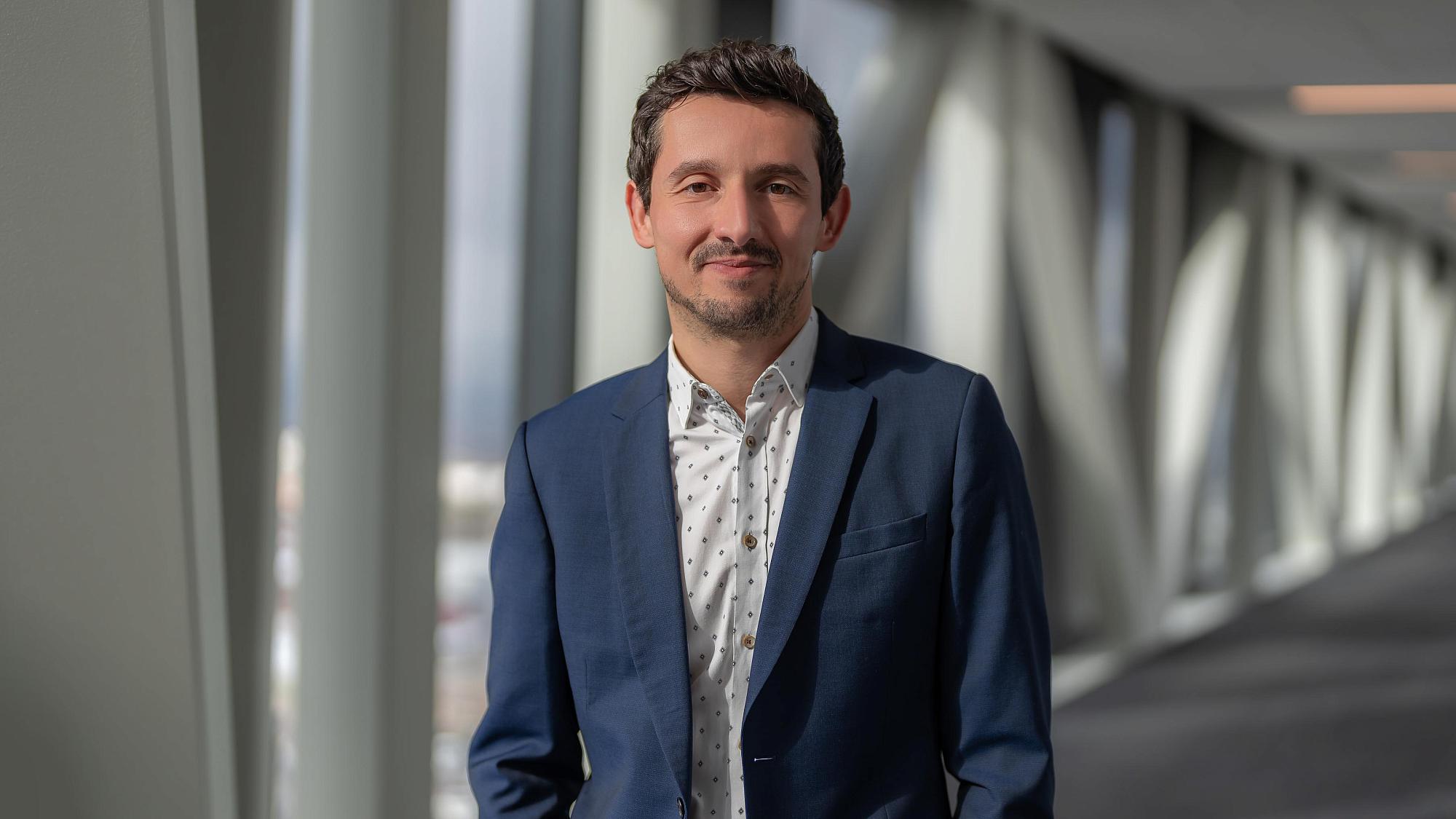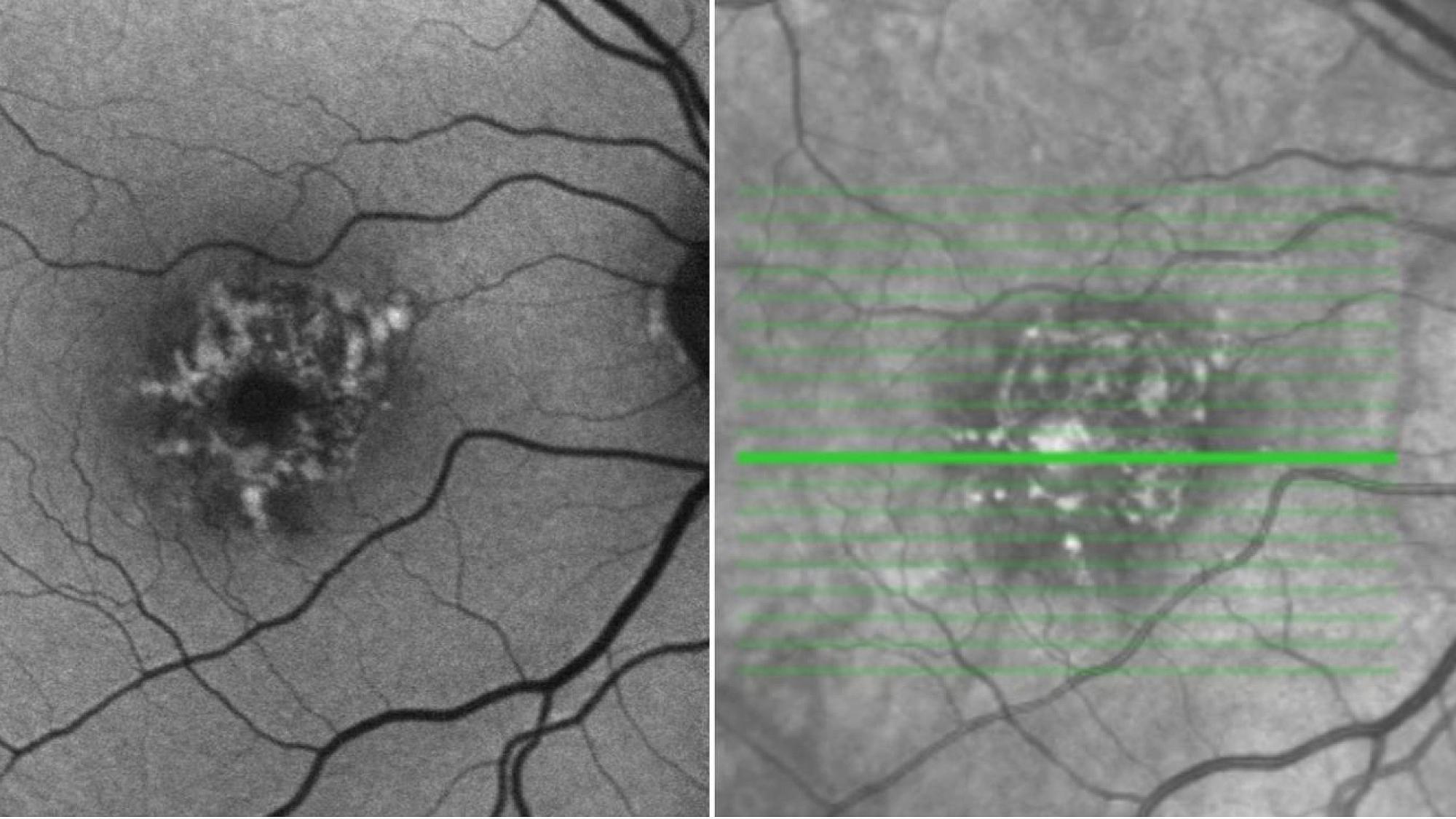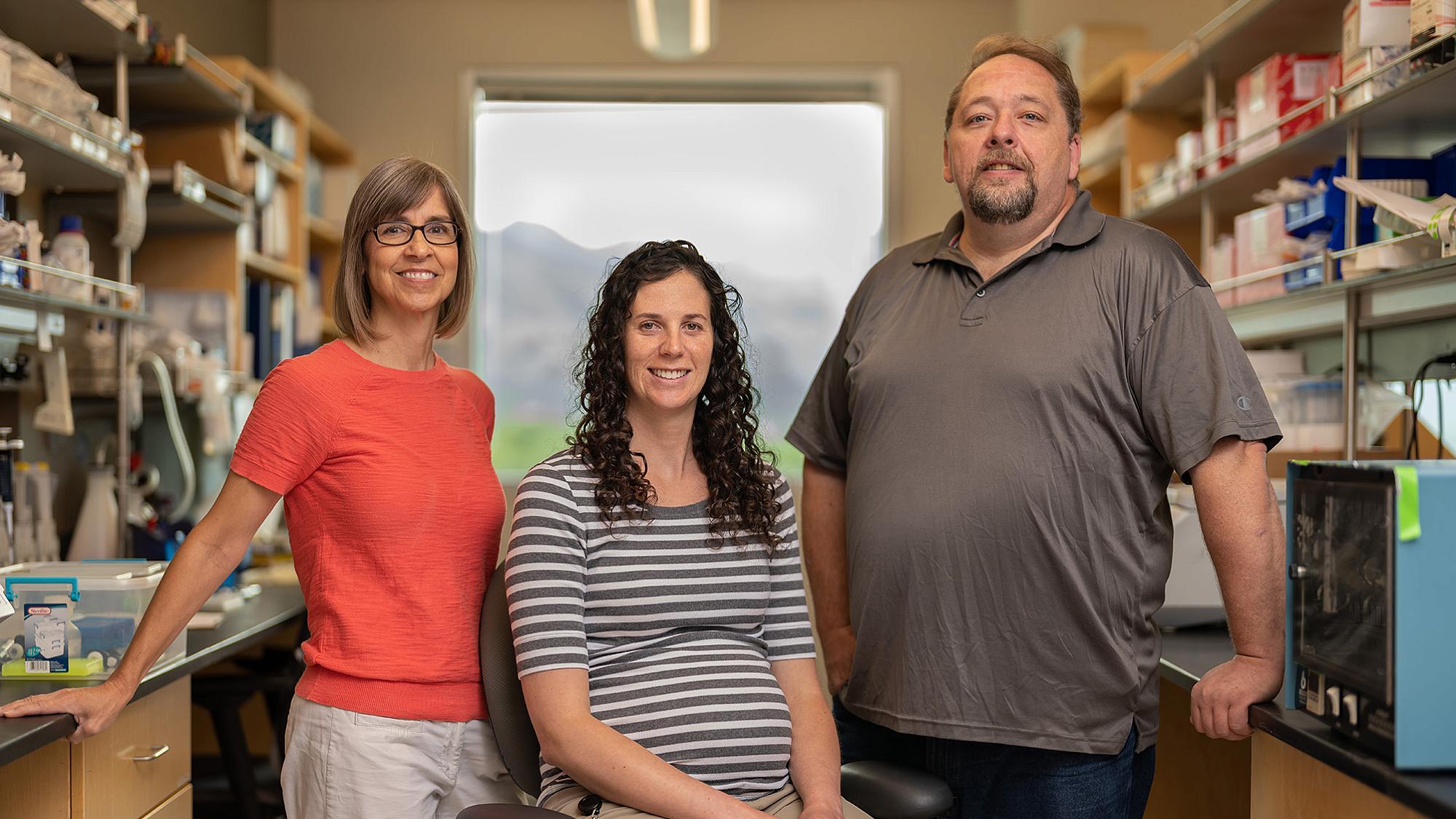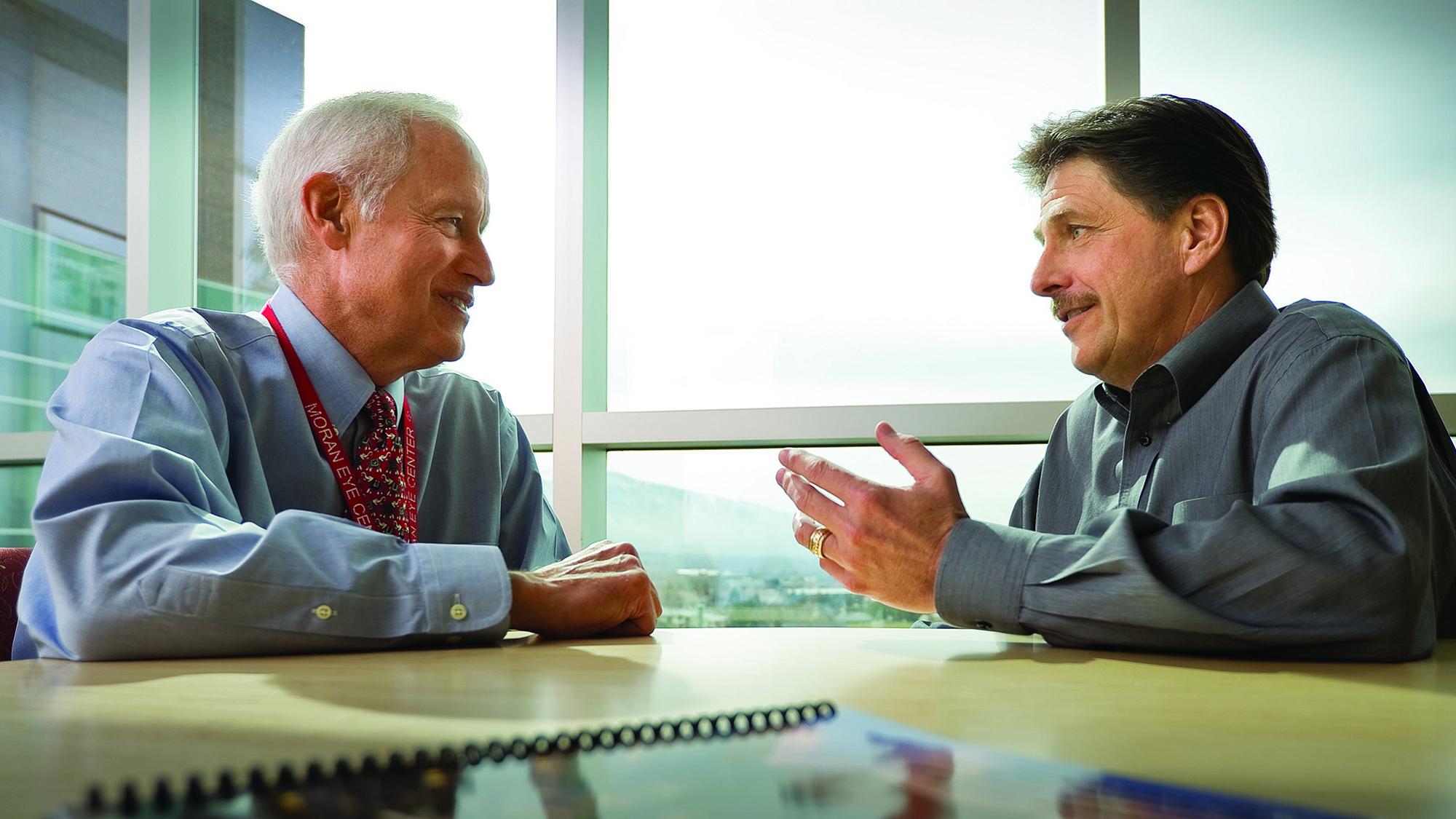
A New Model
Traditionally, developing a new drug therapy costs approximately $2.7 billion on average, with the process taking a decade or more. As a result, traditional drug development suffers from significant inertia that is detrimental to patients and their care providers.
The Sharon Eccles Steele Center for Translational Medicine (SCTM) was founded to bypass this traditional model and make drug development faster and more cost-effective. To do so, the SCTM integrates all aspects essential to drug development, including basic science research and an ongoing clinical study.
Unique Resources — Better Tools
Donor and Institutional Funds
In a time of inadequate federal funding, the Moran Eye Center and individuals, corporations, and foundations provide financial support to attract top researchers and speed up their work. The SCTM is named in honor of Sharon Eccles Steele, who pledged $9 million to support its mission as part of a larger fundraising campaign supported by many generous donors.
Combined Expert Knowledge
The SCTM relies on a team of talented scientists seeking to understand the molecular mechanisms causing AMD and driving its progression. As part of University of Utah Health, the SCTM also brings together national and international scientists and clinicians from multiple disciplines to develop effective clinical testing and treatments
Resources include access to the Utah Population Database (UPDB), a one-of-a-kind resource that contains genealogical, public health, medical, and environmental exposure records for more than 20 million people. The UPDB is one of the world’s richest sources of data that supports health and genetic research.
One of the World’s Largest Genetic Patient Studies
The SCTM clinical study has enrolled over 4,800 people with and without AMD or a family history of the disease and has collected more than 60,000 DNA samples from other studies. Researchers use the data to understand more fully the underlying genetic and biological bases of AMD, and to identify potential candidates for future therapies developed by the SCTM.
Donated Eye Tissue
Since no other organism has age-related macular degeneration (AMD), researchers must work with study subjects and donated human tissue. Dr. Hageman began collecting human eye donations in 1987 to examine the biology of AMD. Today, his repository includes more than 8,500 pairs of eyes, the largest in the world dedicated to the study of normal and diseased retinal tissue. Working in partnership with the Utah Lions Eye Bank, SCTM eye tissue staff members, directed by Lisa Nichols, are on call 24 hours a day, every day, to receive and process donated human eye tissue.
Sophisticated Image Analysis
The Utah Retinal Reading Center (UREAD), directed by Steffen Schmitz-Valckenberg, MD, applies rigorous standards to quantify and analyze retinal images, with the goal of assessing the effect of therapeutic intervention on ocular diseases. UREAD assists the SCTM in identifying clinical markers of AMD that are associated with disease progression, and that may be used in future clinical trials.
News from the SCTM
Lessons Learned: AMD to Glaucoma
With a new gene therapy for age-related macular degeneration in clinical trials, Gregory S. Hageman, PhD, is ready to take on glaucoma.
Meet the First Patient to Test Moran's Gene Therapy for AMD in Utah
A Moran Eye Center age-related macular degeneration (AMD) patient recently became the first in Utah to test a new gene therapy developed by the SCTM.
Moran Eye Center Docs Named to 2024 Power List
The Ophthalmologist magazine has named five Moran Eye Center leaders in care and research, including SCTM Executive Director Gregory S. Hageman, PhD, to its 2024 Power List of the 100 most influential people in ophthalmology worldwide.
Research Focuses on Protein Treatment Potential
The SCTM's latest AMD research points the field away from a liver-produced protein others had identified as a promising therapeutic target.
Review Provides the Latest on AMD for Doctors and Patients
The review in JAMA, co-authored by Moran Eye Center experts Monika Fleckenstein, MD, and Steffen Schmitz-Valckenberg, MD, includes the latest information on AMD risk factors, treatments, and much more.
New Federal Funding for AMD Research
Internationally renowned researchers Monika Fleckenstein and Steffen Schmitz-Valckenberg are forging new ground in age-related macular degeneration (AMD) research.
New Potential Therapy for AMD Identified
HtrA1 augmentation is a potential therapy for Chromosome 10-driven age-related macular degeneration.
